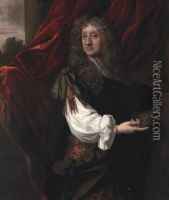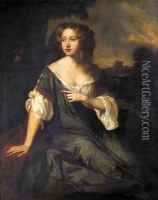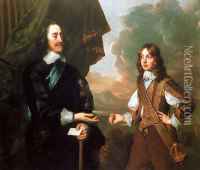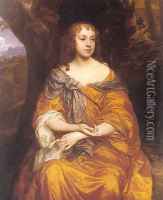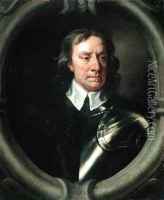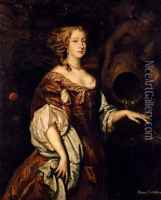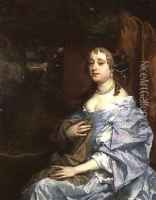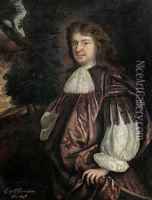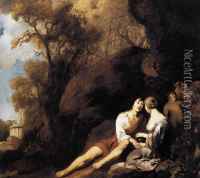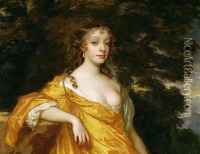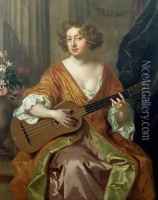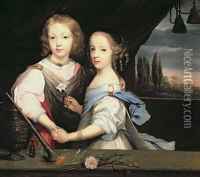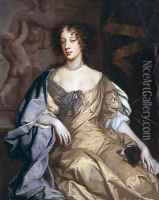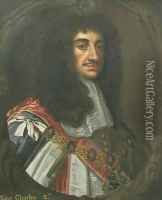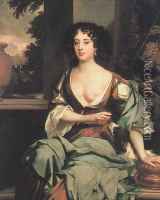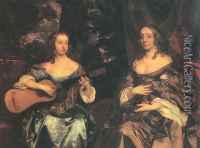Sir Peter Lely Paintings
Sir Peter Lely, born Pieter van der Faes, was a painter of Dutch origin who became one of the most prominent portraitists in England during the 17th century. He was born in Soest, Westphalia (now part of Germany) but of Dutch parents in 1618. His family moved back to Holland, where Lely studied painting in Haarlem under the guidance of Pieter de Grebber, a respected portrait and history painter.
After completing his apprenticeship, Lely moved to England around 1643, and his career flourished during the tumultuous period of the English Civil War and the subsequent Interregnum. He developed a style that appealed to the English gentry and nobility, and his skills were in high demand. Lely's portraits are characterized by their elegance and the use of flowing drapery, soft lighting, and rich colors that drew inspiration from the works of Anthony van Dyck, who had previously dominated English portraiture.
Upon the restoration of the monarchy in 1660, Lely became the Principal Painter to Charles II. He painted the king and his court, including the famous series of beauties at Hampton Court, which depicted the most notable ladies of Charles II's court. Lely's influence on English portraiture was profound, and his studio became a center for the training of artists. His portraits served as the dominant style until the rise of Sir Godfrey Kneller, who succeeded him as the leading court portraitist.
Lely was knighted in 1680, the same year he died. He left behind a vast body of work that provides an extensive visual record of English society during the mid-17th century. His legacy continued through his influence on later portraitists, and his works remain a vital part of British cultural heritage, housed in museums and collections throughout the UK and beyond.

